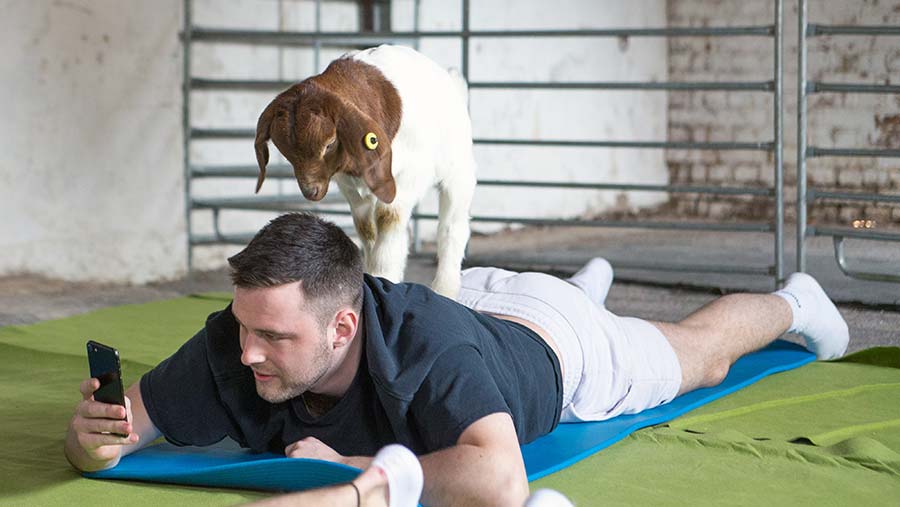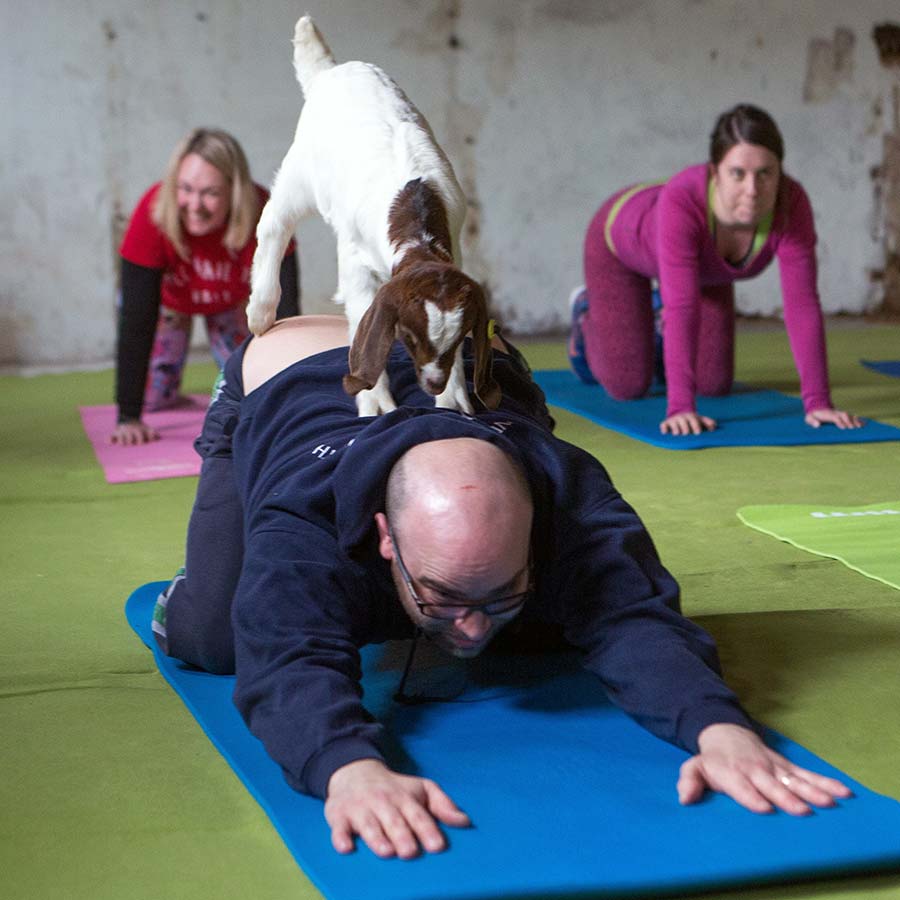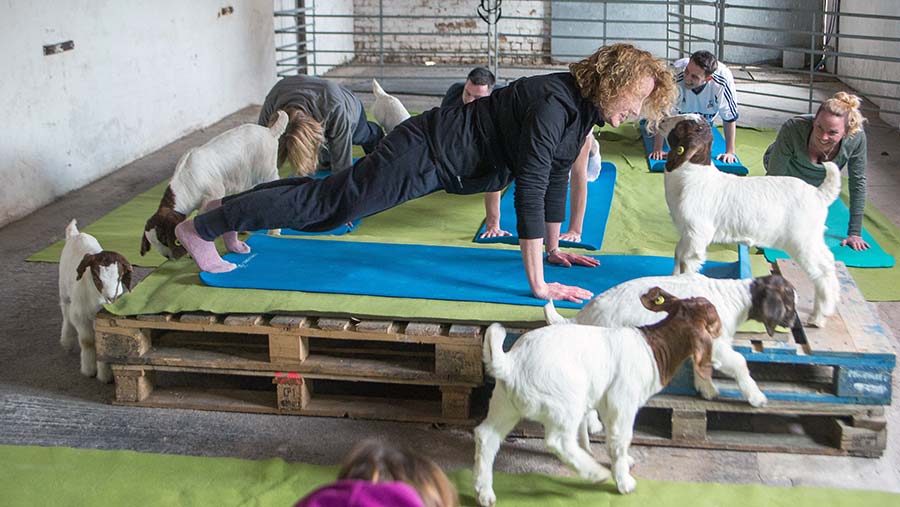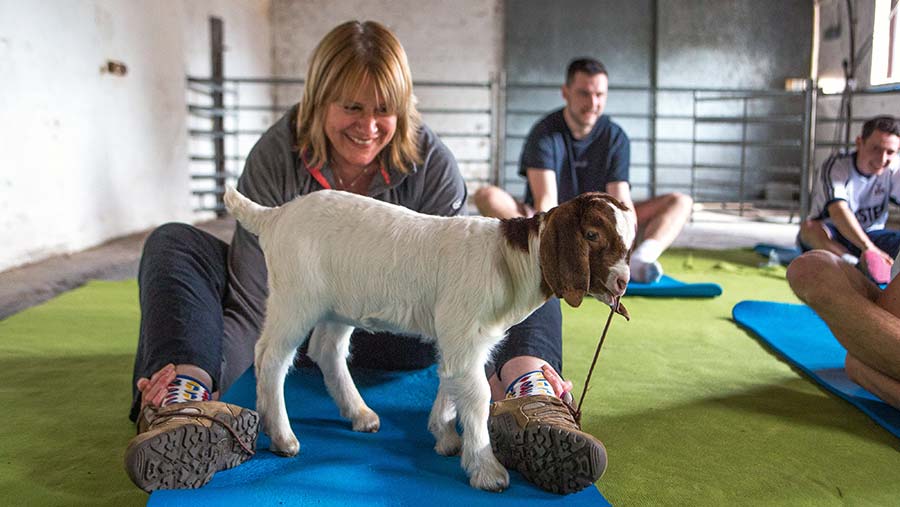Video: Goat pilates bring smiles to farmer and fitness fans
Goats are taking over at Laura Corbett’s farm on the Marlborough Downs, bringing a smile to the faces of this farming family after they endured some tough decision-making.
Farming in the TB-blighted West Country and faced with fluctuating milk prices, Laura and her father Robert made the agonising call to sell their 500-head of Holstein cattle and abandon dairy farming in May 2016.
Today Laura is working hard to build a new herd of pedigree goats at East Farm, with a view of tapping into rising demand for goat meat in the UK.
See also: Video: Farmer’s son builds one of the best gyms in the world
In a UK first, fitness fans have been paying for their fix of goat pilates or “golates” on the farm, just outside the Avebury World Heritage Site, about 10 miles south of Swindon.
Watch Farmers Weekly’s community editor Oli Hill take part in a goat pilates class below.
Challenge our community editor
Have you got an interesting or quirky diversification on your farm? If you’ve got an experience that you think community editor Oli Hill should try, please get in touch by emailing oli.hill@reedbusiness.com.
“Times changed and we’ve got to be adaptable. Goats were an itch that I needed to scratch,” says third-generation farmer Laura.
The desire to farm goats stems from a GCSE project when she was at school and after the dairy cows had been sold she decided to give them a go with the support of her dad.
“Sheep and goats are like chalk and cheese – they’re actually a lot more like cattle in terms of their dietary requirements and they are also susceptible to TB. They pick like deer, rather than graze fields,” she explains.
This makes them the perfect encore to pasture after the farm’s small herd of rare-breed White Park cattle are moved on to fresh land, cleaning the pasture of weeds and even trimming back hedges.
Healthy option

© SWNS
Laura went on a fact-finding mission to Australia last November, where goat farming is more sophisticated than in the UK.
With commercial goat farming less common, she learnt that there was a global lack of high-health-status South African Boer goat – the top breed for goat meat – and Australian farms are exporting the genetics of their herds worldwide.
Laura has a five-year plan to grow her closed herd, which retains the Noremead name of the farm’s distinguished Holsteins – taking numbers up from 20 to 120 breeding females before she markets the goat meat in any great quantity through a local butcher.
See also: 6 top tips for getting into milking goats
“People are always looking for healthier food alternatives and goat meat is one of them. I’m not too far from London, so there’s a growing market to sell to there,” she explains.
Goat meat has more protein and iron than most other meats while being much lower in fat compared with beef, pork, lamb and chicken (see table).
Meat nutrition: Goat meat is significantly lower in calories compared with the alternatives
|
Calories |
Fat (g) |
Saturated Fat (g) |
Protein (g) |
Iron (g) |
|
|
Goat |
122 |
2.58 |
0.79 |
23 |
3.2 |
|
Beef |
245 |
16.0 |
6.8 |
23 |
2.0 |
|
Pork |
310 |
24.0 |
8.7 |
21 |
2.7 |
|
Lamb |
235 |
16.0 |
7.3 |
22 |
1.4 |
|
Chicken |
120 |
3.5 |
1.1 |
21 |
1.5 |
Source: US department of agriculture. Based on a comparison of 80g of roasted meat.
“There’s no guidebook to commercial goat farming and I’ve got a lot to learn, but I find that exciting,” she says. “Think of it a bit like a beef suckler herd.”
As a former dairy farmer, there is a lot that Laura wants to investigate and experiment with, such as kidding down females at 18 months rather than two years and exploring the potential to kid 1.5 times a year.
See also: Goats prove a viable meat business for farming couple
With some time to go before this herd can start fully paying for itself, Laura knows she needs to find other ways to support this fledgling enterprise – goat pilates is just one of the ideas Laura is working on to generate some extra income.
Goat pilates: A quirky second income

© SWNS
After mum-of-two Laura saw videos of goats standing on people’s backs during yoga classes in the US, she was inspired to combine the joy of her goat kids with pilates classes.
“I thought to myself, we can definitely do something like this,” she says.
The sessions are taught by Swindon-based instructor Sarah Summers in the farm’s original cattle milking stools shed and are much the same as a normal pilates class.

© SWNS
Similar to yoga, pilates concentrates on posture, balance and flexibility, with an emphasis on core strength to improve general fitness.
See also: 6 simple exercises for farmers to stay fit on the farm
Unleashing six-week-old goats into a room with up to 16 people might seem bizarre, but it’s helps fitness fans come away with a feel-good buzz.
Participants are encouraged to stroke and interact with the inquisitive characters as they playfully jump and climb on them or nibble clothes and hair.

“It brings another dimension to the classes and it’s not meant to be taken too seriously. You get a workout but you have some fun too,” says Sarah, who has also been teaching Laura pilates for a number of years.
These cheeky kids are light and loveable, always inquisitive of participants during a class, whether they are in “child pose” or “downward dog”, no two classes are ever the same.
Golates tickets are available on the farm’s Eventbrite page and for more information visit the East Farm Facebook page.
